
Бесплатный фрагмент - Mysticism from A to Z
A clear introduction to the deepest and most complex spiritual issues
Introduction
I realized that I had to start from the very beginning. This way many people can use this course of mine “Mysticism from A to Z” as a way to get acquainted with mysticism. I consider mysticism to be an exact science, I would like you to be able to comprehend this teaching from the very beginning, as a science, without all sorts of insinuations and profanities, so that it would serve your interest, so that it would be your journey into the world of practice, to the world of comprehension, to the world of new revelations, and would not be associated with any mystifications, with some secrets, understatements. I will formulate as much as possible, and what cannot be conveyed in words, you can check yourself in practice and make sure that all the indicators are correct, although not all of them are sufficient.
I want you to understand that any teaching is a map, a map of the path that you will have to follow yourself and check everything from your own experience.
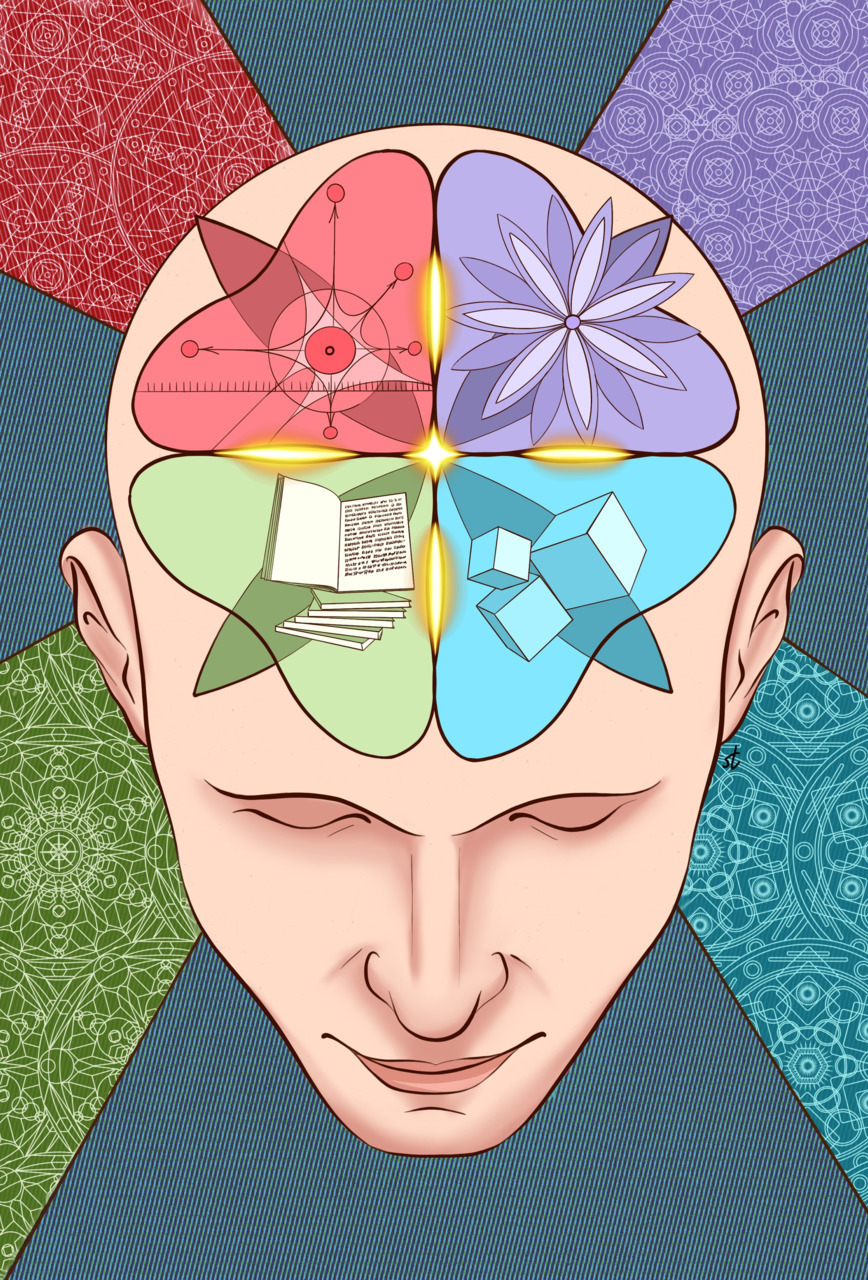
1. About thinking and the Moment of Now
Dear spiritual friends, I am very glad to welcome you to the pages of my book. I decided to record a short but complete introductory course for you, for those who are interested in mysticism.
Recently I have received an interesting question that concerns a schematic understanding of the mental plane system. It is closely tied to the question of what is the practice of staying “right here and now” in the Moment of Now, and I would like to discuss with you whether we understand this practice in the same way and whether we understand what the mental plane is, what is the cutting off of the fantasies of the mind, and what is staying in the Moment of Now. There is a lot of confusion around this topic. It is primarily associated with the fact that in a huge number of traditions Mind is equal to consciousness, they often write “Mind” (with a capital letter), equal to “consciousness.” In our country, in our colloquial and in our conceptual apparatus, it is written that the mind is thinking, intellect, mental plane. Because of this, there is a lot of confusion associated with misreading Buddhist and Zen Buddhist texts. I want you to have a complete clarity on this subject, so I have separated the concepts of consciousness and mind. This will correspond to the fact that there is a “small” and a “big” mind. So, for example, in India in general there are several concepts of the mind, so the most important point is to be aware of what do we mean using this word. I am referring to our intellect, using the word “mind”, I mean our descriptive ability, this little mental plane of ours. In that way, it is by no means consciousness. Therefore, you and I will consider the mind as a collection of thoughts that describe our direct experience.
The main activity of a working mind is to describe, to interpret, to evaluate, and to compare our direct experience. In my model, which I give to my students, we divide the mental plane into sectors. It is very simple and you need it in order to be aware of what is at stake. So, the first sector is the mind serving our direct experience. This is what helps us to survive in our daily life. Every day we understand what we see, we interpret it, we evaluate it, we compare it, draw conclusions — all this is a working mind that really deals with direct experience.
The second sector of the mind activity is work with mediated experience; it is our way to receive mediated experience. This is the mind that helps us to understand speech, to create images when we hear words, to remember them, and this is the most important element of experience in the modern world. Experiences that are mediated are of paramount importance: these experiences you do not put into practice. You, as it were, accept it from people who have gone through something in practice, but accept it in the form of words, descriptions, images, explanations, clarifications, and you may check a small part of it directly in practice. A modern person, a social person does not exist without the ability to receive mediated experience. If we were told that you shouldn’t stick your hands into the electric plug, few people would check this out by experience. Many will be able to understand this intellectually and to get indirect experience from other people that this act can lead to some kind of damage. They would never test it in their entire lives. They would just take other’s word for it. So, the ability to gain experience through words, through description is very, very important, it is the most important ability of a modern person, in whom this experience is already much superior to the experience that you get directly. These are books, films, dreams, and communications. This all gives us a kind of indirect experience. Thus, the second most important part of the mental plane is the part of the mental plane responsible for indirect experiences.
The third important part is the creative mind. This is the mind that is capable of creating something new from the first and second parts, relying on them — on the direct and the mediated experience, to create something that has never existed before and this is something that drives evolution, drives our progress. It is a very important element of the mental plane, it is the ability to compile, the ability to evaluate, and also create something new that has not existed there before. Yes, it may be a blueprint for a new car that is going to be embodied in metal, but it is something that was not there before. Of course, a person relies on previously seen cars, on the study of their designs, on the study of what was given to us in direct experience, when it comes to an engineer, but in any case, a creative element, a creative approach and something brand new is appreciated.
So, I have listed for you three types of the mental plane, three types of mind. First is a working mind that operates with the direct experience, second is a mind that relies on the mediated experience, which we receive mainly through words, third is what we have called the creative mind. And only the fourth part of the mental plane is damaged by the virus of the ego-structure, this ego-virus, only this one is occupied with serving the ego. So, only one fourth of the mind is involved in maintaining the ego structure, no matter how much it is there in percentage terms, each one probably has a little bit in a different way. However, it is very foolish to say that you can turn off the mind. Any damage to one of the listed segments is a serious illness. You would become practically a “vegetable”. You would be not able to function or live in our social space, therefore, do not take seriously those who have “killed the mind”, “turned off the mind” — we do not need it.
There is only one sector that brings problems, and this is the sector which serves the ego-structure. And this sector is not related to direct experience. It can be associated with mediated experience and, basically, it is associated with imagination, with thinking about, with some kind of implication, therefore, when we talk about withdrawing attention at the “Moment of Now”, about living in the “Moment of Now”, we are talking about the output into direct experience and we leave the sector of thinking that serves the ego.
Staying in the moment, staying in the immediate experience of the Moment of Now, it is okay to know the names of things — this is a working mind; it is normal to be aware of and know the purpose of objects, it is normal not to be a moron who does not understand what he is looking at. Socially active people should not practice at this level: in order not to know the names of objects, to look at them and not to know their purpose. It is already a very deep disconnection of the entire mental plane and, as a rule, it is practiced in some retreats by hermits, but not by socially active people. You all have been in such states when, after some long flight, you woke up somewhere in an unfamiliar place and could not understand — who are you, where are you, what is hanging on the wall and, what does it all mean after all? After such long flights, changing time zones, sometimes it takes time for the mind to turn on and “download files” for the normal movement of thinking to begin. Otherwise, you simply have perception, you open your eyes, but the mind does not turn on, it is still in some kind of dormant state. Sometimes this happens during sudden awakenings, when you wake up in the wrong phase and, again, it takes time to align the mental plane and your perception.
So, I told you about the four parts of our mental plane, and also pointed out that staying in the Moment of Now turns off, in fact, three of the four parts and leaves only one at work. It has nothing to do with time, first of all — it is connected with turning off the imagination. You turn off the imaginary, those thoughts that produce stories, that unfold a certain time continuum, and you come to the Moment of Now in which this psychosomatic organism is functioning. Now there is quite a lot of speculation that thoughts are also occurring in the Moment of Now, but these are some kind of advanced people that confuse you a little. Of course, thoughts also occur in the Moment of Now, but our “imaginarium” is able to unfold its space-time continuum, and when attention begins to “swim” along this continuum, asking questions: “What is going to happen?” “What has happened?” “What happened when I was a kid?” “Where is it now?” — it is what is called the exit from the “Moment of Now” which is right here and now. Thus, you lose touch with direct experience, and attention is immersed in these stories. So, the Moment of Now, about which Ram Dass once spoke, he called it — “be here now”, and as Eckhart Tolle now says — this is not a profanation. It is practice, the practice of staying in direct experience. It allows you to see how much trouble and suffering your imagination is giving you, and this practice is the cornerstone of all teachings. I have not come across a single teaching that would not give you support for the Moment of Now, which would not talk about disconnecting, stopping internal dialogues, about stopping this imaginary. But you should not stop the working mind, which adequately tells you the names of objects and their purpose. This is superfluous, this mind does not serve the ego structure, the ego structure is served by the imagination, thinking, etc.
Now I have told you in detail about the mental plane, as we see it in our Free Away teaching, have told you about the practice of the Moment of Now, that is the withdrawal of attention and the best of all is the withdrawal of attention in which you are aware of your body. You can concentrate on breathing, you can concentrate on sensations, you can concentrate on perception, but at the same time, you do not lose the perception of your own body. Because your body is always in the Moment of Now, it is never yesterday, it is never tomorrow. This organism is always fresh, always — today, and, as I like to joke, even with your own breakfast: you have this “fast break” not tomorrow, not yesterday, but right here and now.
This is where I want to end this chapter. Send your questions to the address at the end of the book, and I’ll be waiting for you on our live streams every two weeks.
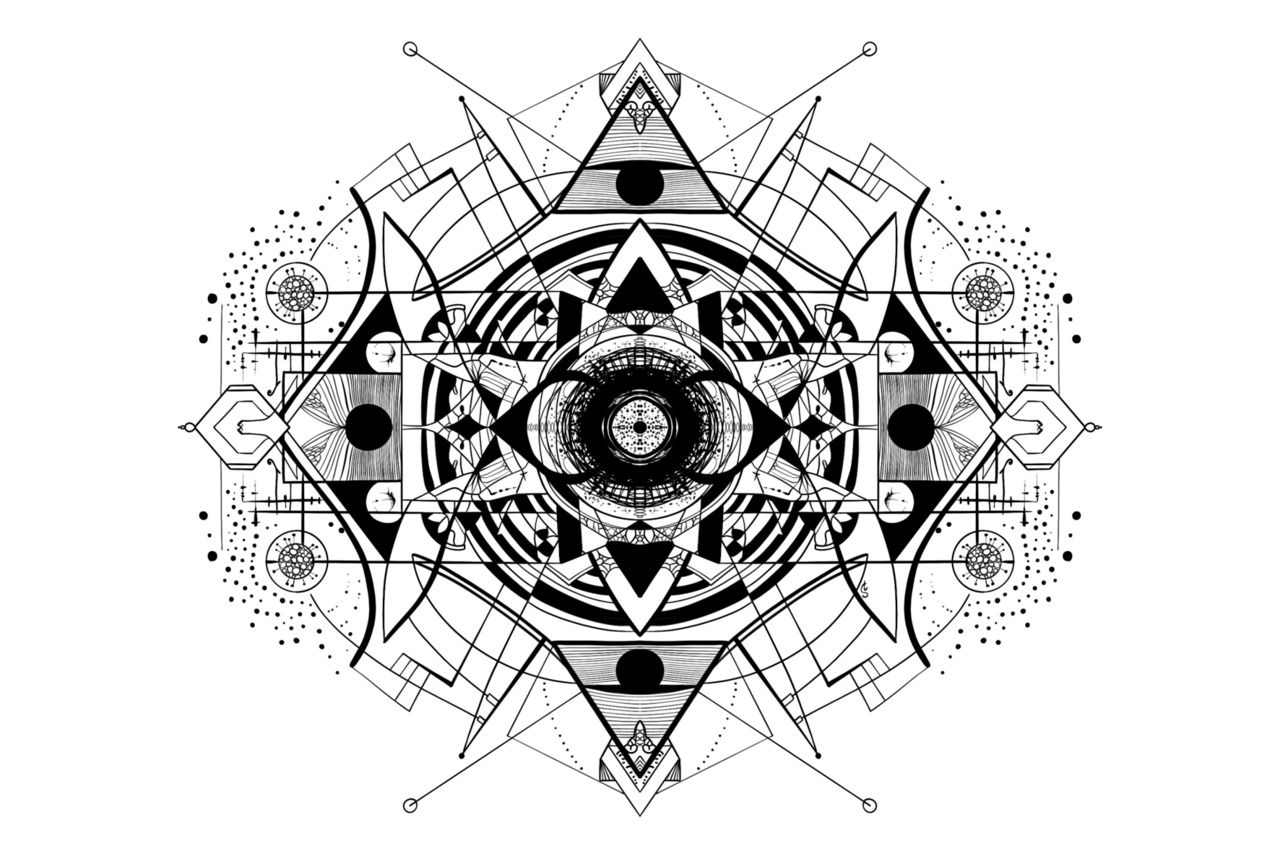
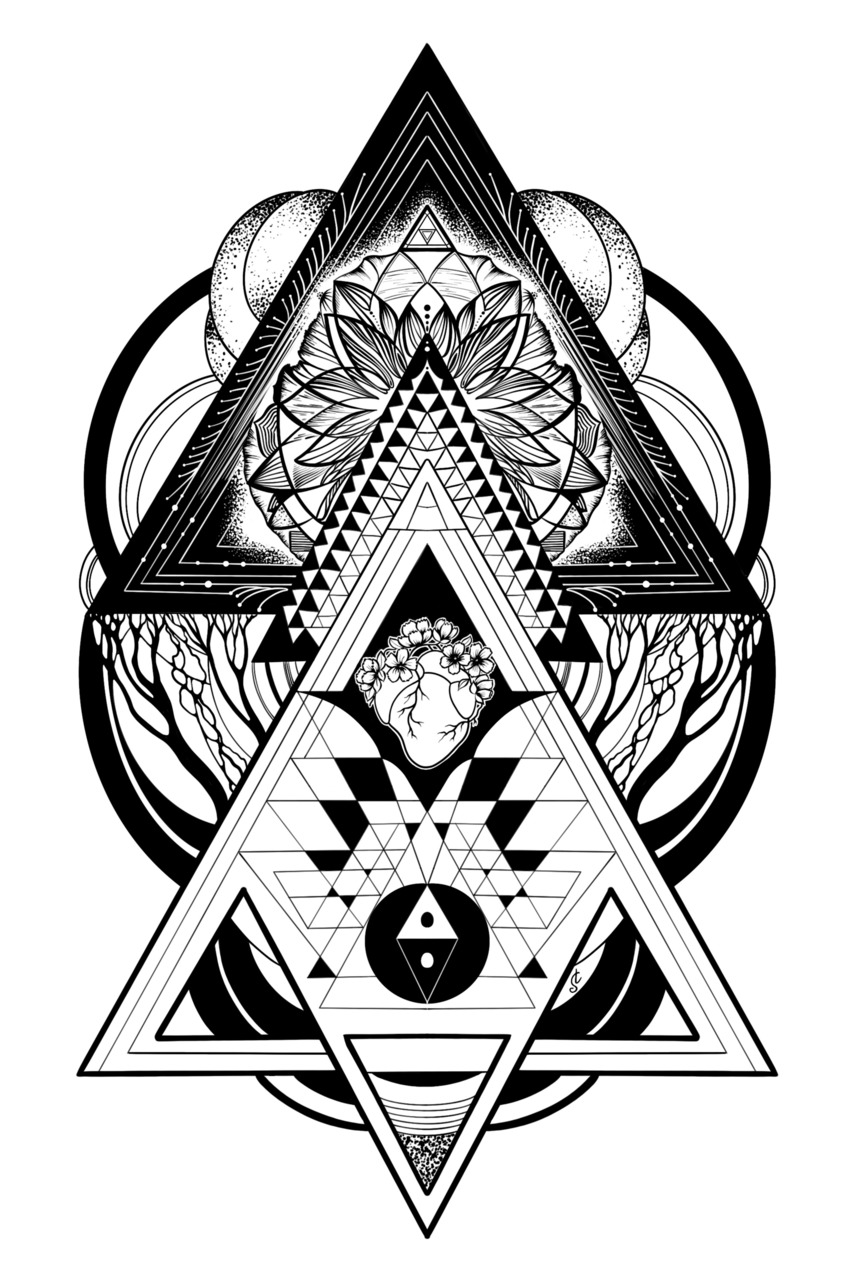
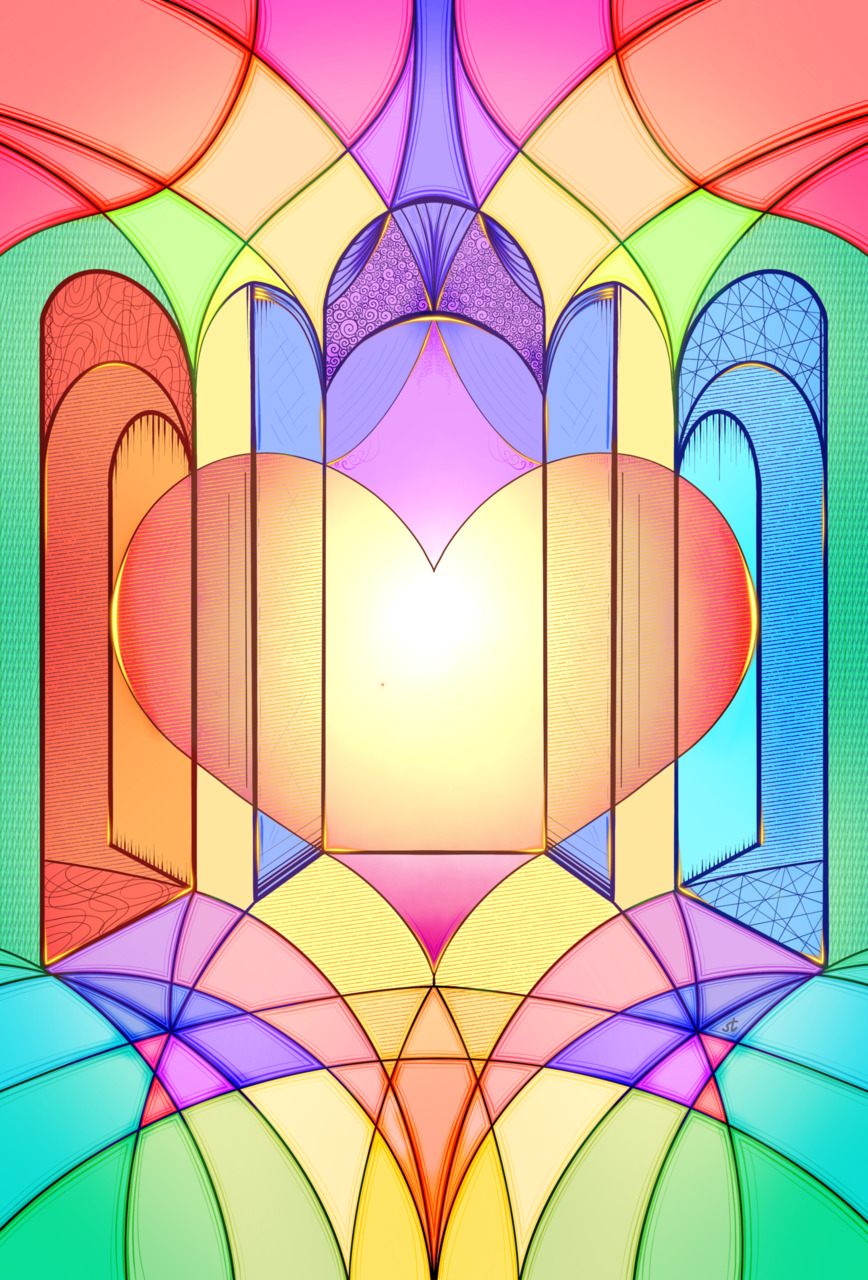
2. Four kinds of experience. Mystical and spiritual experience
After writing the first chapter of this series, I was very pleasantly surprised by the great attention and received quite a lot of mail with questions about this. Therefore, literally in hot pursuit, I decided to continue and I understood that I had touched on a very important topic — the topic of thinking and the topic of the gradation of this thinking.
People ask me about a working and parasitic mind or a thinking mind, but this is the terminology of Ramesh Balsekar — “working mind” and “thinking mind.” I think that in our system it will be precisely the “working mind” and “imagination”, respectively, we conditionally divided the mind into 4 parts. I believe that this is the best option for you to be aware of what entering into the Moment of Now means and what is ultimately being cut off there. It is that thinking that is able to unfold the space-time continuum and switch attention from the current immediate experience into a fantasy about this experience, and the distinction of these things is very, very important.
What questions will we discuss next? I would like to raise an issue that is very closely related to the types of thinking — this is the issue of the types of experience. Today I will give you such a concept as “four types of experience”, and you will add a little bit to the picture. What do the “four experiences” mean? Yesterday we dwelt in some detail on the mediated experience that we receive through our mental plane — that is, it is the ability to receive experience through the imagination. We are told some kind of plot, we receive information, we build all this into a kind of a picture in our imagination, we put an image of ourselves there and just through this we get an indirect experience.
This experience is very important, and we can call it the experience of the mind, but more important is the direct experience. This is an experience gained in the Moment of Now through our senses. It is then remembered, it is then recorded, but it should never be confused with the experience gained indirectly. You must clearly distinguish — this experience I got directly, for example I learned to ride a bike, and this one — I read about how to ride a bike. You can read a book about a world swimming champion, but that does not mean that you have learned to swim, that is, learning to swim directly, getting direct experience and reading about it, hearing about it — these are different things. In your system of thinking, there should be different folders in your memory, which do not allow you to lie that this is — I received directly, and this I received indirectly. The differentiation and distinction between direct and indirect experience is a very important point.
The fact is that when we touch mysticism, spirituality (and now we have a very large access to literature), we, of course, have a great temptation to simulate all this and wake up just in our imagination. However, any difficult situation pisses us off and sends us straight to who we really are and what we think of ourselves. Therefore, it is very important not to confuse mediated experience with direct one. It is such a childhood illness to present fantasies as reality and do not have the ability or strength to admit that this is only my mediated experience, that I don’t have it in my direct experience.
These are the two types of experience. The next type of experience that I am going to give you is an experience of altered states of consciousness. In our Formation, we do not consider this type of experience at all, because we have a very clear attitude to spiritual experiences. Experiments obtained with the help of all kinds of means, no matter what — permitted or prohibited, changing our everyday state of consciousness — are not spiritual. They are psychedelic experiences involving changes in brain chemistry. That is, if you accept something or influence in some way the body — these are altered states of consciousness, and they are not a spiritual experience. I want you to understand this clearly.
The fourth type of experience is the highest experience available to us — spiritual experience, and I want you to hear now that this experience has nothing to do with imagination, with mediated experience — it has nothing to do with it. It grows out of your direct experience. I also call it the “ultimate expression” of direct experience. That way, first in practice, we move from imagination, where we are stuck and where our attention is stuck for many days — to direct experience, and from direct experience, we, without applying any means, move to spiritual experience. These are very specific experiences, these are very specific practices, and these are very clear states that are testable and repeatable because they are not fantasy. Therefore, there are teachings about spirituality, about mysticism. I want you to understand that these are very precise teachings. I generally call it science, because it meets the criteria that are presented to science, it is repeatable and it is testable. Therefore, spiritual experience is a very clear experience.
The first such spiritual experience, oddly enough, you will not believe, is Love. That is, Love is not a feeling, it is not a sensation; Love is a spiritual experience. In fact, a loving person is already a spiritual person. The entrance to spirituality is the entrance through Love, if we are talking about the first and most accessible experience. Yes, you should be a rather subtle person with an open mind. What is the soul in this sense? The soul is essentially a counterparty to spiritual experience; the soul is the recipient of spiritual experience.
If the mediated experience is received not by the body, not by the organism, not by the senses, then this mediated experience through words is received by the mind, and this is essentially a mental experience, modeled by the mentality, and the recipient of it is the mentality. Do not be afraid to say that this experience is received by the mind, that it is not received by your body. The experience received by the body is a direct experience, and the experience gained by the mentality is a mediated experience. The experience of which the soul is the counterpart is a spiritual experience. And the first such experience is Love. Love is not a feeling, Love is not a sense, Love is a deep spiritual experience, it is a guide to the world of spiritual experiences. So, mysticism is a science that deals with spiritual mystical experiences.
A very important point, which we have already talked about, is the practice of withdrawing attention into direct experience. If you do not learn this and do not begin to distinguish, then all your spirituality may take place in imagination, that is, in modeling, in fantasies, in thinking out. And this is not spirituality, this is pseudo-spirituality, this is mental spirituality, mental fantasies. Therefore, the road to spirituality goes through being in the Moment of Now, in direct experience. You must first stand here. This is where the spiritual journey begins, this is where our spirituality begins and it grows out of direct experience. It has nothing to do with psychedelic experiences caused by all kinds of drugs or exercises that involve changes in brain chemistry. It has nothing to do with imagination, our fantasies. If you hear me, then I will be very, very happy.
I have passed on to you the teaching of the “four types of experience.” Although it seems very simple, your discernment will have to work and assimilate this information.
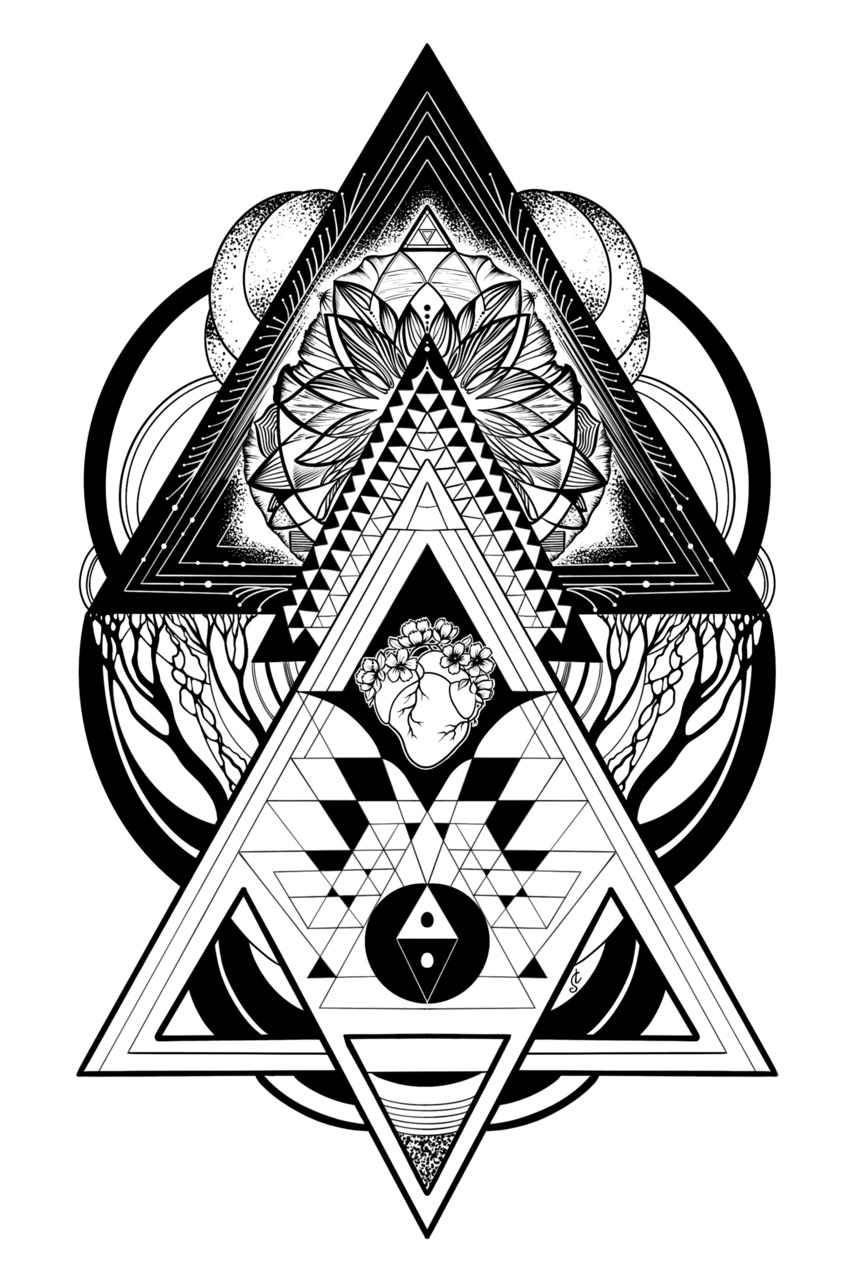
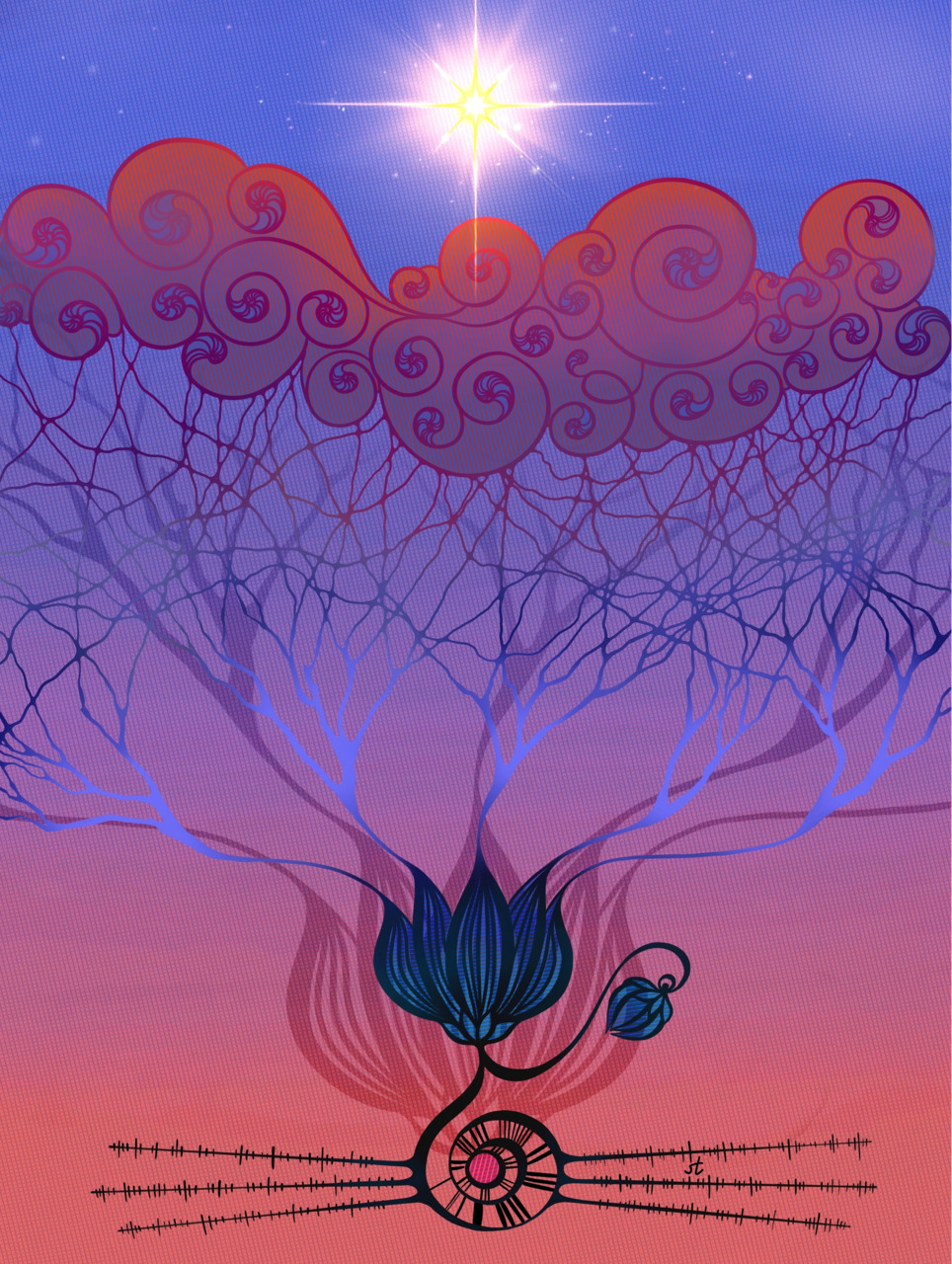
3. Worldviews, pre-rational and supra-rational viewpoints
In this chapter, I would like to continue to keep the story up in the same way as it was started in the previous chapters, but now we are going to discuss one very sophisticated issue, which is not spoken at all in modern teachings and mysticism. It is an issue of viewpoints, or worldviews. So what does this mean? A worldview is a view on the world, such a global understanding of the world order, it is precisely the global understanding, not private, and it is not about how some single events take place. It is about the global world order. And I would like to devote this chapter to a story about what worldviews mean and the understanding of world order viewpoints.
As usual, I split this concept a bit. We have three main types of worldviews: pre-rational, rational, and supra-rational. Exactly the same grading is offered by Ken Wilber. — He is a very interesting modern mystic who puts forward such a distinction of worldviews. He studies and practices mysticism. We will nevertheless split them into several more subparts to make it clearer what is at stake. The teaching that I present to you in this chapter is the teaching on worldviews. Their distinction is very important, since it is very easy to confuse the levels and mix up the pre-rational worldview with the supra-rational one.
The supra-rational is a mystical and spiritual worldview that surpasses the rational explanation of the world that science investigates. Mystical science is engaged in a supra-rational worldview. It is only a supra-rational worldview that provides answers to such global questions, that are just beginning to arise before leading scientists now, when they reach a certain progress in the study of consciousness and they have already come to the conclusion that all of this is rational. Some people even joke that they will prove God and his existence sooner than the mystics who got bogged down in the pre-rational viewpoints. So, I would like you to understand this issue quite clearly and to be very correct with it, because today we are often faced with one problem: when the pre-rational is taken for the over-rational. Some believe that mysticism and spirituality are some kind of “swims” in the imagination, fictions, that these are some kind of mythical stories, magical “siddhis” and so on. But in fact, this is a road in a completely different direction, and rational thinking, a rational worldview serves as the Rubicon in this matter. This is, in fact, a scientific worldview, and, thus, science is closer to mysticism than all this mythical religious husk. You should understand that I mention religion here in the framework of some fairy-tale dogmas only. Returning to the issue, it is oddly enough, but in the modern world we can rarely find a very clear understanding of worldviews, so I would like to acquaint you with a brief summary of this issue.
We are going to make an overview of worldviews: there are several worldviews within the framework of rational views, within the framework of mystical views and within the framework of pre-rational views. I will try to discuss this issue as briefly and as simple as possible in this chapter, even though this issue is very, very global. In fact, it is not even mystical at all, but it is rather an information and philosophical issue, although the mystical worldview levels are comprehended by practice, they are not dreams, there exists some experience behind them. So let’s start.
The first type of pre-rational outlook or worldview is a magical worldview, it, like the mythical, refers to a child’s worldview, it is immature. When a child does not have any idea of how the world works, about interconnections, about causes and effects, but he wants to explain how everything works here. As an individual, the child places himself at the center of the world. There is some healthy grain in this assumption, since each point of this world can be called its center, due to the fact that it does not have a clearly defined border. But this idea is also fed by egocentrism, namely by an unconditional belief that I am the main one, I am the best, I am in the center, and everything revolves around me and, in general, I am the steersman of this world, the world revolves around me, I have my free will, my choice, I can decide to do something, and everything around me must obey me.
This magical, childish worldview is very well nourished by the ego structure, by this false sense of authorship. However, any developed mind, evaluating such a system of views, comes to very serious contradictions, noticing that this seeming control, in fact ends, as they joke, at the length of your hand. You cannot control the weather, nature, any social phenomena, or other people. You do not control your body, you cannot predict any diseases and, therefore, this worldview “I am in control”, “I am a steersman” collides with contradictions. In addition, the will of another person is another global contradiction. It opposes “my” will, and these collisions begin at the level of a magical worldview. “What can I do if I want to do something, but he doesn’t? How can I force him to do what I want? After all, I am the creator, I am the driver, and my will must be “carried out.” But his will is completely different, and therefore a clash on the basis of this magical worldview is inevitable. I am not going to dwell on this issue for a long time, I can just add that this childish worldview, which arises within the framework of egocentrism, is doomed to failure. You cling to it, you continue to promote it, but a mythical worldview comes to replace it.
You must create some other center of will or choice in the mythical worldview. This center of power carries this will out in relation to all living beings, for example, it can be God. For a child, it starts like this: at first it seems to him that he is ruling the world, then he thinks that the world is ruled by his mother, but when his mother is not able to fulfill his whims, he realizes that she is also not omnipotent. Then a certain mythical God appears who rules the world, and you should deal with him, and you should please him as he seems to control all people, while you personally either have a limited will, or you share it somehow with God, you have some kind of contract, some balance of interests. The mythical worldview presupposes some kind of outside force that controls this world, and we should be on good terms with it. So we start to flirt with it, we try to please it, our internal dialogues begin not only with people, but also with some higher power. — This higher power is the level of the mythical worldview.
It is replaced by a rational worldview and it means that the fairy tale ends. The child goes to school, where they begin to teach him what we call cause-and-effect relationships. They begin to explain to him that each effect has its cause, and each reason, in turn, is also generated by some effect.
At first, it has a clearly expressed linearity, in a way, that you can always find some reason in everything and every action is generated by some reason — you should look closely, and then you will definitely find this very cause-and-effect relationship.
This is a rational worldview, of the first level — when we strongly believe in causes and effects and carry out some kind of functioning in the mode of these cause-and-effect relationships. We try to figure out them out in order to avoid mistakes, to calculate what exactly leads or does not lead to this or that consequences, to build some logical chains. And this is how we function this way, but at some point we begin to notice that cause-and-effect relationships fail. Of course, if you throw an object a hundred thousand times and then it falls on the ground a hundred thousand times afterwards then certain regularities could be derived from this simple fact. They are not laws, they are regularities, because they work within a certain “dimension”, within a limited space-time continuum where this particular law functions. This is how the whole science works, all its discoveries, all science laws — are essentially regularities, because there is not any single law that could function in any “dimension” on the same level of objectivity since it is always tied to some certain conditional boundaries. You know what boundaries mean, because only within a certain limited continuum measurements can be taken, neglecting the influence of other forces. This neglect of some factors is always present in any scientific event, which is called an “experiment.” There are always some limiting factors that are taken into consideration, and there are some that are not admitted, and there is always some conditional boundary of the experiment, where the rest of the factors can be neglected. This is how certain regularities are derived that confirm the cause-and-effect relationship. This is a rational level and we become rational people when we rely on it, our thinking develops, we calculate various connections and observe that many of them take place in a certain space-time continuum.
The next type of rational worldview is the awareness that the number of mutual impacts is infinite. In fact, it is a postulate that “everything affects everything”, this also includes “string theory”, and so a person begins to expand his narrow boundaries a little and realize that the world of mutual impacts is infinite. It is impossible to calculate all the factors; we can only talk about the dominant influence of one of them. For example, we do not consider the influence of all planets on the Earth, but we feel the strong influence of the Sun and the Moon, but it is clear that all other planets and stars also affect the Earth, the Earth also affects them, and all this is — one huge cosmic system and there is not a single star that would not be influenced by all the others. Mutual impacts or interferences are innumerable and endless and “everything affects everything”. This scientific understanding has already been an approach to the border of the mystical worldview.
Therefore, we can say that science is closer to mysticism than myths, fairy tales, epics and other stories that we often take as mysticism and spirituality. In fact, this is a childish worldview. As a result, many scientists like Einstein and other scientific luminaries, for example, Niels Bohr, met and conversed with mystics: they wrote about their conversations with Jiddu Krishnamurti. In this way you can understand the desire of psychologist Carl Jung to meet with Ramana Maharshi and so on. All the leading scientific minds sooner or later realize the manifested conditionality of the discipline being studied and they wanted to come in touch with a truly genuine mystical model.
Next, we are going to consider a couple of such models. The first model is the simultaneity of the whole creation. It is a very common non-duality worldview, which says that creation happened simultaneously, at once and only its recognition is a linear process. That which is created at once and simultaneously is only perceived and described by us linearly. It means that there is a gap between the whole creation and its perception. Our perception is discrete, partial, limited, the description is linear, but creation itself is one-time, simultaneous, all-embracing and total. It is a very deep mystical view that means going beyond the linear time. I think I will soon write the chapter “The seven kinds of time”, where we will dwell into the concept of “time” and how we consider it in our Free Away teaching in more detail, but today our topic is the topic of worldviews.
Furthermore, there exists such a world view named — Maya-vada, which is considered to be a deep mystical view. According to it, the world seems to us as a kind of illusion that has arisen against the background of something stable, eternal, real, and hence there has appeared this world view of the illusory nature of the creation. If in the first mystical view, we have a view of a one-time simultaneous creation, and it is not questioned, then in the second mystical view everything, the whole world is just manifested and it is illusory, but this illusory is related to a certain reality.
And the final the most powerful view of mysticism is uncreatedness, which asserts that there was no creation at all. It is impossible to explain this, because this is the top of the views of the mystical school. In India it is called Ajata-vada, where vada means a viewpoint or worldview. Ramana Maharshi singled it out as the highest view of non-creation. In fact, it correlates with the knowledge of the Fruit of mystical teachings, and those who recognized the Fruit, those who are in a natural state, can claim that this worldview is correct, although, of course, it is only descriptions. So, we have gone through all the basic worldviews: supra-rational, rational and pre-rational.
Now I will focus on the problem that is faced by seekers. Do not be offended if it will be a very painful revelation for some of you. It lies in the fact that magical and mythical thinking are very ancient and powerful, the consciousness is very strongly captured by them. These childish worldviews do not let us go that easily, especially if we have not played enough with it in the corresponding period of our growing up. It holds us back and, therefore, the rational thinking imposed on us, seems to us dry, rational and lifeless with its causal relationship, with the study of physics and chemistry, how everything works, how everything really exists, how and what follows each other, what is possible, what is not. Only a few go to rational thinking consciously, so most often we feel trapped in these rational frameworks, in these physical laws, in these causal relationships, and we want something “tasty”, some kind of mystery, something unusual… And many seekers, let go of rational thinking and descend back to the pre-rational level and become esoteric. They imagine something here, some “siddhis”, some miracles, and they just dive into this childish worldview, and this is quite usual. Their consciousness is not ready yet to come to a rational outlook, to a rational picture of the world, and therefore many confuse the pre-rational viewpoint with the supra-rational viewpoint. Many seekers often believe that they have already passed to the supra-rational, but in fact they have sunk deeply into the pre-rational, and begun telling each other fairy tales, start chasing some “siddhis” and miracles, begin telling stories that they have not seen themselves, but they have supposedly been seen by their friends, and all this is very well supported by our “imaginarium.” These stories are precisely its fuel.
Everything that is pre-rational is supported by the mind that is responsible for imagination and fantasies, and since it is a creative mind, it can invent a lot of things that are not supported in our physical reality, in our direct experience. This way now I’m connecting the types of worldviews with the four types of thinking that I have described in the first chapter.
The fact that it happens is not a big problem, because sooner or later you have to realize that you have come back to the pre-rational level and you still need to return to the rational level first, but this time you should return already with opened eyes and not like in childhood, when all your favorite toys have just been taken away. By the way the virtual world is pre-rational in all means, it is a fictional world however even if practically does not rely on any physical reality, so it is also a return to the pre-rational level, to games, to childhood, to aliens and other fantasies. It doesn’t matter if aliens exist or not. I just want you to figure it out: it doesn’t matter at all in this case. It is important that they do not exist in your direct experience, in the Moment of Now. Well, they could exist, but what happens when you imagine? You think that someone comes from Sirius, or someone is from another constellation, from past lives, from other planets — they all could exist… But now you are engaged in the imagination, in the fantasy, you are cut off from the present, from current direct experience. So, when you lose this support, it is very difficult for you to return to sobriety. You start what we call “hard glitching, hallucinating”, and a lot of people sooner or later find themselves in some not very healthy mental states, and afterwards some people are helped in psychiatric clinics, in order to cope with them. When the power of these fantasies reaches a certain level and disrupts all defense mechanisms, you start to see in reality what you are imagining. This is called schizophrenia, since no one sees these images but you and this is the problem. Thus another person, other people who see the same objects with their own organs of perception, can be a tool for the testing of your sobriety.
Please do not be offended, but I must point it out to you, because this is the guarantee of your mental health, sobriety, the support at being in the Present Moment of Now. Why do you think monks sit and stare at the wall? Why do they cut off the mind? They are not sitting in fantasies, they are sitting and trying to concentrate on this Present Moment, on the moment of Now. Why are they counting breathing cycles? Why are they looking at their navel? Only because they should “anchor” in the Present Moment, in the moment of now and discard their fantasies, discard the “imaginarium”, discard everything where the mentality can drag them: to other planets, to some miracles. I’m not against all these childish dreams, but it’s only a return to childhood and you know that! Therefore, when you come across things that are unverifiable by experience, it is just fantasy.
What is going to happen next? It is possible that we have been boiling in these pre-rational things for several years or decades, because even when we have been reading very deep texts of mystics, we have been still adapting them to our worldview, that’s the whole point. We cannot comprehend Ramana Maharshi, because we “stick” him into our pre-rational thinking. Everyone constantly asked him about some “siddhis”, and he answered them thousands of times: “I am worried about the issue of suffering, if you are suffering right now, without any ‘siddhis’, could ‘siddhis’ turn out to be a source of additional suffering?” And in this issue he was absolutely right. The issue of healing from suffering, the issue of sobriety, the issue of clarity has nothing to do with these speculations, reflections and fantasies. Therefore, this discrediting of mysticism and spirituality has recently acquired a colossal, quite colossal scale precisely because of the diving of adepts into the pre-rational.
Still there are those who, having dismissed pre-rational, go out into the rational again and begin to find fault with all the mysticism. They begin to assert: “This all is all only fantasy, this is all fiction, I was there, it’s all terrible, just stay normal people.” And here I nearly agree with this position, but you should not pour out the child with water! The supra-rational exists, the mystical exists — this is a certain complete science, and it is open to you. As soon as you are getting sober, grown up — do not close this door for yourself, you will definitely go into a real mystical spiritual world, and this will not be the world of fairy tales. This will be the world of your direct mystical spiritual experiences.
Now, I would like to finish the transmission of the doctrine of worldviews. We have analyzed magical worldviews, mythical, rational worldviews, and finally supra-rational worldview, that is the spiritual vision of the world, confirmed by experience.
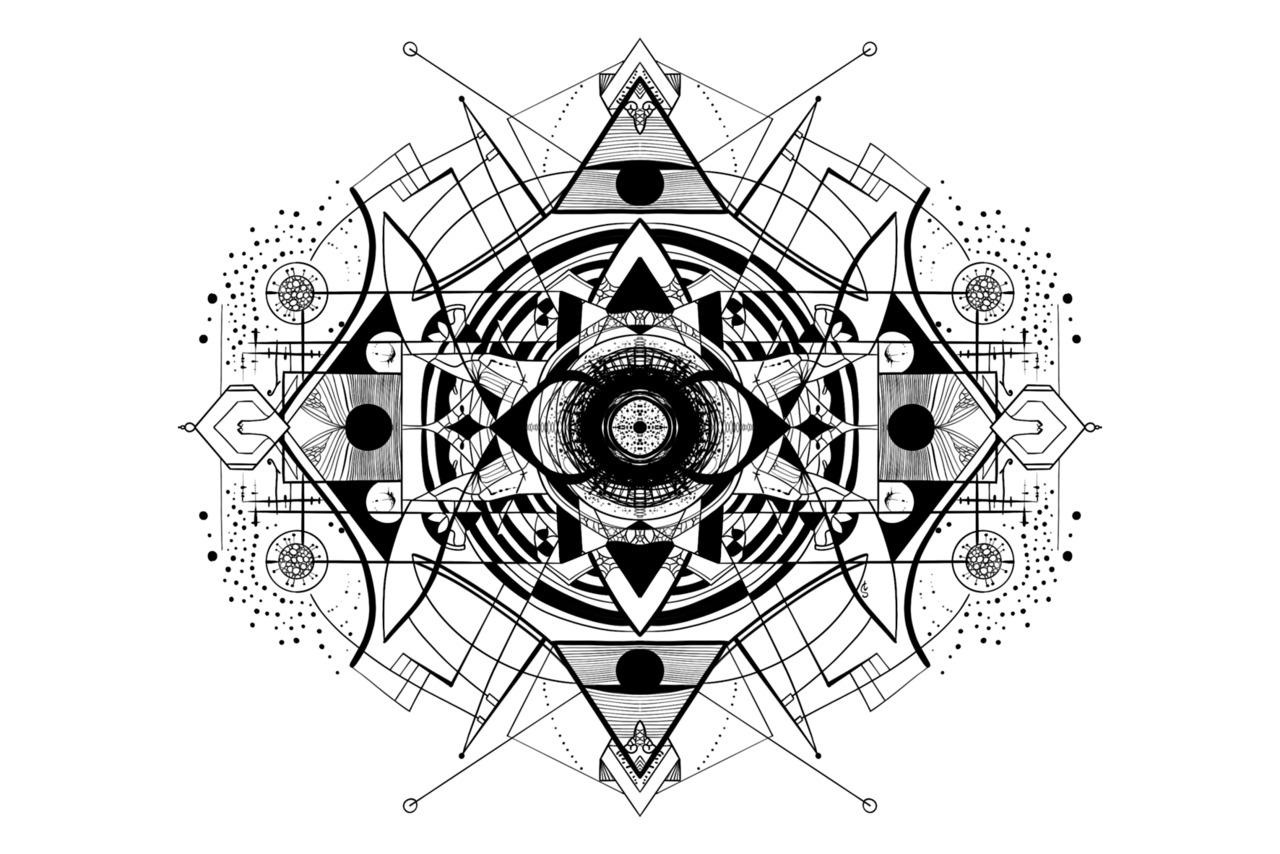


4. Types of thinking, if mind could be called ego?
In this chapter, I would like to return to the issue of thinking, to the issue of the mental plane, and continue to clarify it. Once again, I would like to emphasize a very important point: in our Free Away teaching, the mentality, the mental plane does not mean consciousness, does not mean individual consciousness, but rather an instrument for describing the world, which is secondary to direct experience and perception. It develops as a service structure for our direct experience, it is more the intellect than consciousness in our terminology and in our understanding of the mental plane. Thinking arises as a processing of immediate direct experience received through the senses, therefore it can be called another feeling. As we have five senses, the mentality as well can be called the same sense organ, because it does not develop without other senses. For example, if a child has some problems with his direct experience, with the sense organs — vision, hearing, touch, smell — then his intellect also develops weaker, because some channels of perception of the world are blocked. Therefore, in teaching this is a very, very important point, and we clearly distinguish between consciousness and the mental plane, mind. We can say that the basis of your spiritual healing is a very clear and precise distinction between these two things, because today many western masters use the word “mind” as a synonym for consciousness. They adopted it from Buddhists and Zen Buddhists, or from someone else. But we have not adopted such a definition, we can name it soul. The meaning of the word soul more corresponds to such a concept as consciousness, but the word mind is usually used when we mean intellect, intelligence, mental plane.
Let’s touch on this mental plane a little more, but not from the position of “living one”. In the first chapter, I discussed four sectors of the mental plane that serve different kinds of experience. One sector only engaged in serving the illusion of the “living one” including serving the author’s program which also occurs there. If you’re interested, you can watch the very long video “From Contrast to Comparison” on my YouTube channel, where I go into great detail on the damage to the mental plane by the ego structure. In this chapter, there will be more information about mental functioning. I would like you to understand not only these four sectors, but also what kinds of thoughts exist.
We can often hear that the mental is a conceptualization, the mental is a running line, that for someone it has stopped, for someone it has slowed down, and for someone it has completely disappeared. No, it’s not like that. First of all, the basis of the mental plane is figurative thinking. What is it? Figurative thinking functions by means of creating images. Creating images is the same thing as photographing. Your camera or phone takes a photograph and in the same way imaginative thinking creates a photograph, creates images. It’s like photographing objects, like creating figurative casts, everything that is perceived by figurative thinking is fixed in the form of images — this is the primary type of thinking.
Then, when a person gets an idea of these images, the photographs are labeled with words and thus we give names to the images. Therefore, the child asks a lot of questions: “what is this, what is that?” So it gives names to its images in its mind. Look around: there is no single phenomenon labeled with some name here, but you know for sure that a mug is a mug, a table is a table, a chair is a chair. So, at the same time with perception, you load an image from the mentality, and this image already has an inscription. The appearance of names is the so-called conceptual thinking, and it is the second level after the figurative one, concepts arise, names appear and then we can already operate with them. When we operate with concepts, the so-called concrete-logical thinking appears, conceptual chains are created, and we begin thinking logically. How are these images related to each other? It is the connection and interaction of phenomena with each other, which are built into conceptual logical chains. This is the second kind of thinking and it is very important for us to be adequate people. In this way we not only name the phenomena, but also build concepts into certain chains, and it is conceptualization and concrete logical thinking.
The third and most difficult type of thinking is abstract thinking. It is an opportunity to summarize our images into some symbols, which can also be called abstract-symbolic thinking. This thinking functions through symbols, where several concepts, images and so on can be packed at once. Abstract thinking is the ability to think symbolically. For example, all mathematics thinks through symbols. At first, in order to understand what 5 is we must have 5 objects, but then when we say the word 5, it can mean any 5 things: 5 fingers, 5 rubles, 5 objects; but we were taught at school what 5 is, on sticks, on objects, do you remember? We do not understand what 5 is, unless we represent 5 objects, and then objects are replaced by objects, and then we move on to a symbol 5. Therefore, when you tell a person 5, he understands what 5 is, he already imagines what it is about and substitutes numbers. There are, in fact, a great many such abstractions.
There are four main groups of abstractions. Abstractions created through the summation of images are, for example, “animals” There is no such thing as “animals”, but the very concept of “animal” is abstract and presupposes the presence in our thinking of a certain folder, which contains files with animals. It is now very easy for us to fully consider the work of our thinking using the example of a computer. The computer completely repeats the work of our thinking. Here we have a folder, we labeled it “animals”, and this word “animals” is an abstraction, the name of a folder, and it will contain specific photographs, images of animals, and they will have a specific name: a cat, a dog, etc. There is also a folder “nature”, there is a folder “plants.” In fact, “plants” do not exist, there are specific plants that are photographed and have their own names. These are abstractions created with the help of images.
There are also abstractions that are created through concepts, and it could be rather complex concepts that are collected into one abstract. For example, such a concept is “mathematics.” It means some specific set of knowledge, but the set itself is some specific logical postulates. “Physics” and “mathematics” are abstractions created on the basis of certain concepts.
The third type of abstraction is a mixed abstraction, which presupposes both the presence of an image and the presence of certain conceptual postulates. For example, I will take such a concept as “Motherland.” This word may contain part of some conceptual meaning, and part of some figurative one. Someone thinks about birches, someone thinks about beaches, someone else thinks about some other things, but at the same time, there is an understanding that the Motherland is the place where I was born, where I lived. These are such complex, more mixed abstractions.
The fourth type of abstraction is abstraction that has arisen on the basis of other abstractions. You can also collect abstract concepts into some complex abstractions that are already based on abstract symbolic thinking. It is really very beautiful and so we have this fourth type of abstract thinking.
Why am I telling you all these things? I would like you to be aware of the depth and beauty of this mental body. The mental body is one of our individual bodies, so I would like you to know what categories it operates with. Then you will accept with a smile when you are told that someone has “killed his mind” or something like this. They certainly do not mean the lack of the ability to think. In this regard, a lot of profanities have arisen, a lot of delusions have appeared, but in fact all these gurus can still interact quite normally, can still communicate effectively, can describe the world quite well, so they have no problem with their thinking. And if they have any periods of absence of thoughts, then these are specific states in which they immerse themselves for some rest, which are akin to dreamless sleep, when our thinking is absent in the generally accepted sense.
It is often very strange to hear how sometimes the mind becomes synonymous with consciousness, which we accept as a wrong interpretation, and sometimes the mind becomes synonymous with the ego, which is also a great delusion. The ego cannot be called by this word — “mind”. Sometimes it might become a direct synonymous — mind, mind, mind. Mind is here, mind is there, one must get rid of the mind, the mind should die. Guys, let’s be correct, let’s be adults, let’s be educated people. If the mind is our mental body. then why should it die? It should not die at all. Let it work, let it carry out its operations. The point is that what we register as a thought is a specific type of thought. It is the point where the “shoe pinches”, as they say. “There exists thought registration and it is a specific kind of thought, and in the same time there is a background mental flow that occurs by default, and we know where we are now, what is happening around us, we know that snow is snow, that a fence is a fence and that the sky is the sky. We do not register all these thoughts; this is a continuous flow of mental information that absolutely effortlessly serves the current moment. This is our working mind, and the speed of this process is very high.
Now you can even do a brain scan and see the number of thoughts that appear in a particular brain: synapse flashes can be recorded by devices today. So, the number of these flashes of electrical signals that arise in the brain are huge, these flashes turn into a chemical reaction and then they are deciphered as thoughts. According to this research more than a hundred thoughts come to us per second. Tell me, how many of them are registered by us as thought? It’s good if we register one thought. The rest of them just become an endless stream and they are not registered as thoughts. So, very often when they talk that they have stopped their thoughts, in reality they have only stopped the registration of these specific thoughts, do you understand it? They say: “my mind has stopped, there are no more thoughts.” In fact, there is simply no secondary registration, but — everything is in order with their thoughts. A person remains adequate, he has all the completeness of information, he communicates, he interacts. There is simply no secondary loop that is registered as a thought, because this thought is registered within a special neural loop that is present in our brain, which has already been established and defined by neurophysiologists. This thought only when it passes along such a loop is registered as a thought, and it has its own specific features and tasks. As a rule, it is the thought that serves the “thinker”, which means the “one” who has thoughts and this is the ego-structure in thinking. Those thoughts that are registered within this neural loop are often called thoughts, apart from all the thinking process that takes place in this information flow.
Be mature people, be sober people, and be aware of this difference. When the neural loop stops working, it seems to you that thoughts have disappeared. In fact, the registration of a specific thought that serves the “thinker” has simply disappeared. There is this ego-structure in the mind, which is called the “thinker,” and it, of course, can stop functioning. When this ego-structure stops functioning, the ability to think will not disappear, you will still be intelligent, still be smart, still be aware, but you will not have a secondary emergence of the “thinker” in the thinking process. This is the ego-structure in the mind. The appearance of this kind of tension has been the manifestation of ego structure. There appear some questions “What should I think; but I thought this was not what I wanted; I should think more; I am stupid” and so on. This ego structure can go away, but that doesn’t mean that the thinking process has stopped, or your brain has stopped functioning, or your synapses have stopped flickering.
In this chapter, I talked about the thinking process, mainly about its types and about the fact that the “thinker” is one of the specific thoughts that requires registration of other thoughts, and it can really disappear. This is the fourth type of thinking process, which in the first chapter I called the thinking process serving the ego-structure.


5. What is mysticism? The first steps
I want you to understand that any teaching is a map, a map of the path that you will have to follow yourself and check everything from your own experience. The teaching should not replace your own practice, your own path in no case. This is the teaching of live feeling, this is the teaching of gaining experience, and not the teaching of any theories. In the theoretical part you are given some view. A view is a description of the path by those who have already walked along it. It is a description, a map, but you should check it for yourself. And, believe me, there is no greater joy to know that the descriptions were not entirely accurate, because mysticism is a discipline where language is not able to convey the full depth of experience. I have already written that, for example, love is the first spiritual mystical experience — it is the experience of love, and how difficult it is to convey it in words! How many books have been written about love, but until you have had this experience, until you immerse yourself in it, these words will tell you nothing. Therefore, we will check every step, we will move together, and my task is to support you in your practice and give reliable, clear indicators.
In this chapter I will return to the very beginning and answer the questions that often come to me: “What is mysticism and why do we need it as a discipline?” You know, nothing has changed since the time of Buddha. Of course, we talk about getting rid of suffering, and, in fact, in the simplest words: mysticism is the science that answers the questions: “Why am I suffering?” “Why is the suffering still here?” Despite the fact that there were many teachers, many masters, suffering continues to accompany a person’s life. On the other hand, you might say, “Why am I unhappy?”, “Many teachers say that happiness is my true nature, why can’t I afford to be happy?” This is a short answer to the question of what this discipline is about. Buddha also said: “life is suffering, and there is a way to get rid of suffering.” He had an Eightfold Path where he outlined the steps to be taken to overcome suffering. Nothing has changed, everything is the same.
Now, whom is this discipline for? Whom is this teaching for? The main thing here is the request for the deliverance from suffering. Of course, there is the illusion of getting rid of suffering and achieving happiness through the object world, and this is the first thing people try to do. In our modern time, happiness often means: to become successful, rich, to reach some social heights, and so on, that is, everything is as usual: money, power, relationships — it is where we are looking for happiness. But there is also a deep frustration with these object-oriented ways of achieving it. Everyone should check it out based on their own experience. Someone checked it in a past life, as they joke, so there are some young people who start the mystical path early enough and do not particularly bother achieving social benefits. However, my path was different. I came to mysticism quite late, and before that I tried to overcome suffering and achieve happiness through all of the above mentioned methods. When you realize that it is unlikely to be successful, then you start looking for another path. In this way you become a seeker, you become one who tries to overcome suffering. You study ancient teachings, meet masters and those who are looking for this path within themselves. The term “turn inward”, believe me, is about this, and not about the fact that you should turn to yourself and conduct self-investigation, you will realize this later, when you already become a real mystic.
When do you become a real seeker? When you realize that looking outside does not bring relief from suffering and does not lead to happiness, that is, I repeat again, this can happen as a result of deep disappointment, when you have already tried everything in this life. However, this is not a dogma, for some, right in the depths of their consciousness, the absurdity of this direction is spelled out. There are cases when young people realize that they will not find happiness in the world, they will not find it among objects, so I am not inclined to send everyone into the world, to try to impose some kind of family happiness on everyone, I accept people as they are.
Further, I would like to show what path you are going to use. Initially, you are encouraged just to be attentive, yes, just be attentive. Throughout all your journey, this direction will pass: be aware, be attentive, be alert, develop attention, develop awareness. What is this about? The main instrument of the entire spiritual path is awareness, attention. We are not able to use any other means. All mysticism is the work with attention, and the first thing you should do is to be attentive to your thoughts, learn to be aware of them, learn to be aware of the movement of attention into thinking, into imagination. This is a very important stage when you start to be alert. You are alert and attentive to your thoughts. This is exactly the beginning. The beginning is attention, which is directed to thinking itself, because the first point of teaching is liberation from the mind, which brings suffering.
It happened that few people in the modern world already live right here and now. It means the same thing that we have broken away from direct experience, we are completely bogged down in this swamp of conceptualization, thinking out, fantasizing. Today, the virtual world is still to help us in that way that we simply do not crawl out of our thinking. This stuck attention is not just stuck there, it is stuck because our image lives there. There is an image of ourselves in which we believe, which we promote, which we serve, and it lives in our thinking. Here you should be able y to distinguish this image, should be able to understand how constant immersion in imagination occurs — it is the beginning of the beginning.
Next, we begin to practice, for example, drawing attention into the direct experience. In the second chapter, where I have described different types of experience, I just stopped at the fact that the withdrawal of attention to direct experience is the cornerstone of all mystical teachings. Without passing this path and not completing this point, you will not be able to distinguish when the imagination turns on and the sensory response begins, and when you are in your direct experience, that is, you will pass the imaginary as a mystical experience. Therefore, the most important Rubicon here is staying effortlessly in your direct experience and, thus, the next practice that you will be given, will definitely be the awareness of your direct experience. It can be sensations, feelings, observation of the breath, it can be the contemplation of external objects, but the important thing is that it passes through your senses right now. You are not unfolding the mental time, you are not unfolding stories, you are living through your current direct experience.
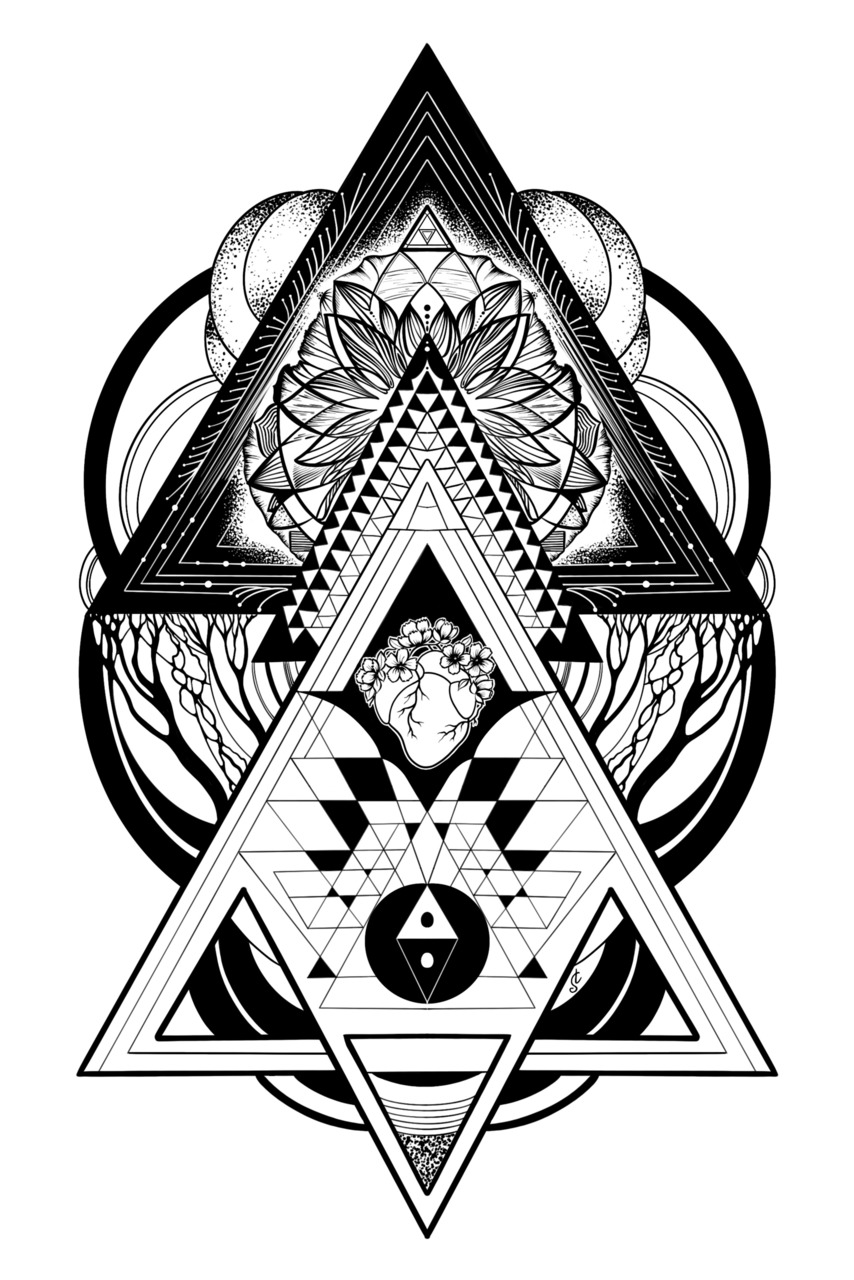

6. Personality, social body. Can a personality be called an ego?
This chapter is going to present one very important issue, that often could be insinuated — it is the issue of personality, and I know that many of you would be interested in it, and many of you wait for it for a number of reasons. How does Free Away define a personality? Does personality disappear as the result of awakening? These are questions that are endlessly confusing.
First of all, what do we call a personality? I believe that the main problem, as I see it, is that the word “personality” often means “individuality”, sometimes “person”, and therefore some confusion arises. “Ego” is also sometimes referred to as “person”, and so some speculation begins that the personality is equal to the ego. It is a very big mistake to equate personality with the ego: then it turns out that the personality must disappear, dissolve, as the ego structure dissolves. This is how such speculations begin: “I am no longer a personality, I have no personality!”, which in turn frightens off sincere seekers, because sometimes they have a greater sobriety than those teachers who have dissolved their individuality, personality, or for whom everything has disappeared altogether.
I would like you to hear this message, which sounds like the following: a personality has nothing to do with the ego, nothing at all, a personality is a social instrument, a social body that is formed within the social environment. To make it clearer, I will give a more detailed explanation of what a personality is. A personality who is brought up within the framework of a social environment becomes a member of society, this way it gets habits, skills, and certain qualities that it acquires within the framework of social education. All our values, all the skills and habits are acquired, ranging from “just wearing pants” and ending with our interaction within social structures, as well as all our ideas about what is good, what is bad and how to behave, to interact. An infinite number of skills, habits and various character traits are obtained in the framework of education in the social world, in the social environment. Consequently, a person is a body, the same body as a physical one, it is a social body, therefore the correct understanding is the following, there is a society, and there is a social body, and this social body is called a personality. The only thing is that it is not congenital, as physical, but acquired, because all bodies participate in its formation: the emotional-sensory, physical, and mental, and the body of sensations — they all participate in the creation of another body — the social one.
Therefore, the personality has nothing to do with the ego-structure. Personality is your ability to communicate, interact — it is a set of skills, habits, characteristics and habits acquired in society. And they don’t disappear, and you continue to function as a personality. There is a completely different story: it is a story about false personalities arising in the mind or in other words some false personalities appear in the imagination, on which the ego structure parasitizes. For example, such as: “What would I like to be?” “What kind of personality should I be to receive love, attention, and recognition?” All these are games into certain personalities, which I am not in fact, and it is these false personalities that arise as subpersonalities, as pseudo-personalities that have been modeled in your mind, in your imagination, and to which a sensual response appears. So, through the ego they are opposed to your natural personality.
Your personality is formed throughout your whole life, all sorts of events have an impact on it, and it could be a subject to correction. For example, if you lived in one social environment, and then moved to another country, then it imposes some changes on your personality. I would like you to understand me correctly on this issue: just as you grow up to 20—25 years old, the same way the main formation of the personality took place before the age of 21. This way, at the very end, your global social ties are built, such as, for example, understanding your role in the social environment, in the society, because it is during this period the relationship to the Fatherland is laid and that is why people serve in the army in age between 18 and 20 years old.
Бесплатный фрагмент закончился.
Купите книгу, чтобы продолжить чтение.
